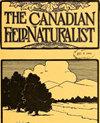Paedomorphic Blotched Tiger Salamander (Ambystoma mavortium melanostictum) in ovo counts, British Columbia, Canada
Q4 Agricultural and Biological Sciences
引用次数: 0
Abstract
Reproductively mature larval morphs, known as paedogens, are a rare occurrence in Blotched Tiger Salamander (Ambystoma mavortium melanostictum). The Southern Mountain population of this subspecies, confined to the southern interior of British Columbia, is listed federally as Endangered and has been facing increasing pressures from anthropogenic stressors in both their aquatic and terrestrial landscapes. In 2017, we examined a subset of 36 frozen Blotched Tiger Salamander paedogens collected in September 1985 after rotenone treatment in preparation for a recreational fishery near Oliver, British Columbia. We estimated total in ovo numbers in nine gravid individuals to gain insight into paedogen reproductive condition. The number of eggs per individual averaged 227 ± 109 [SD]; range 28–421), with larger dark eggs accounting for 133 ± 69 and smaller pale eggs (possibly follicles or colour may be an artifact of storage) accounting for 94 ± 49. Salamanders were collected in September after the expected egg-laying period for the terrestrial form (early spring); thus, the reproductive stage of the eggs is unclear, but is assumed to be post-breeding and representative of developing eggs and follicles. Canadian data on in ovo counts within the body cavity have not been reported for Blotched Tiger Salamander paedogens and our study provides valuable information on the reproductive condition of paedogens. Although terrestrial forms have been observed, the presence of paedogens in the treated wetland has yet to be detected.加拿大不列颠哥伦比亚省卵群中的紫胚斑虎蝾螈(Ambystoma mavortium melanotictum)
繁殖成熟的幼虫形态,被称为幼体,在斑点虎蝾螈(Ambystoma mavortium melanostictum)中是罕见的。这个亚种的南部山区种群,局限于不列颠哥伦比亚省南部内陆,被联邦列为濒危物种,并且在水生和陆地景观中面临着越来越大的人为压力。2017年,我们检查了1985年9月收集的36个冷冻斑点虎蝾螈幼崽的子集,这些幼崽是在鱼藤酮治疗后为不列颠哥伦比亚省奥利弗附近的休闲渔业做准备而收集的。我们估计了9个妊娠个体的总卵数,以深入了解幼体的生殖状况。平均每只产卵227±109个[SD];范围28-421),较大的深色卵占133±69,较小的苍白卵(可能是卵泡或颜色可能是储存的人工制品)占94±49。9月,在陆生蝾螈的预期产卵期(早春)之后收集蝾螈;因此,卵子的生殖阶段尚不清楚,但被认为是后繁殖阶段,代表发育中的卵子和卵泡。加拿大关于斑虎蝾螈幼崽体腔内卵数的数据尚未报道,我们的研究为幼崽的生殖状况提供了有价值的信息。虽然已观察到陆生形式,但尚未检测到处理过的湿地中存在的原生土壤。
本文章由计算机程序翻译,如有差异,请以英文原文为准。
求助全文
约1分钟内获得全文
求助全文
来源期刊

The Canadian Field-Naturalist
Agricultural and Biological Sciences-Ecology, Evolution, Behavior and Systematics
CiteScore
0.60
自引率
0.00%
发文量
54
期刊介绍:
The Canadian Field-Naturalist (ISSN: 0008-3550) publishes scientific papers by amateur and professional naturalists and field biologists, reporting observations and results of investigations in any field of natural history, provided they are original, significant, and relevant to Canada.
 求助内容:
求助内容: 应助结果提醒方式:
应助结果提醒方式:


